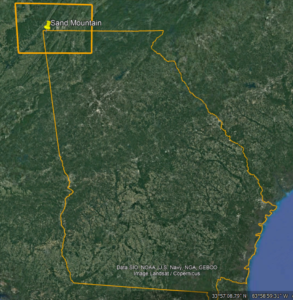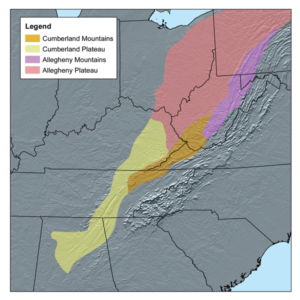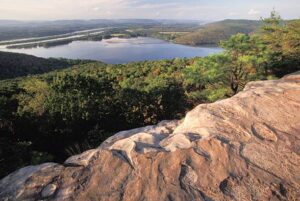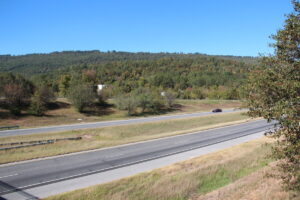
Sand Mountain is a large “sandstone” plateau that sits in the northwest corner of Georgia, crossing over into Alabama and Tennessee. Sand Mountain is a part of the Cumberland Plateau, the end section of the Appalachian plateau and mountain range. Sand Mountain is separated from the rest of the Cumberland Plateau by the Sequatchie Valley and the Tennessee River, and is approximately 1500 feet above sea level, about 800 feet higher than the rest of the region that surrounds it. The rocks in the cumberland plateau were formed in times where this region was covered by shallow sea level, approximately 360-320 million years ago during the Mississippian period. As sea level retreated, this area was exposed to weathering processes which continue to shape their appearance and landscape to this day.

Sand Mountain has been inhabited for roughly 9000 years by what historians think were Cherokee and Creek Indians who initially followed herds of animals later establishing settlements in these areas.. Today, the area is filled with rural inhabitants, with some people being small scale farmers and other agrarian job holders. The area generally tends to be politically conservative, with many of the people being baptists. My family is actually from around Sand Mountain, and they were small scale farmers, being baptist and methodist, as well as conservative. The census data doesn’t lie I suppose!

A lot of the land around this region is part of one of the largest contiguous forests in the Southeast, and prior to increased human influence, this region was covered entirely by this dense forest. Today, the region is inhabited by white tail deer, possums, and other common wildlife. The coyote has been able to take hold as the presence of larger apex predators like wolves and bears were largely eradicated from the Southeast due to overhunting and trapping by humans.

Sources
001, A. R. (2021, October 19). A Complete Guide To Sand Mountain Alabama. Usatales.Com. Retrieved December 3, 2021, from https://usatales.com/a-complete-guide-to-sand-mountain-alabama/
National Park Service. (2021, January). Geology and History of the Cumberland Plateau. https://www.nps.gov/biso/planyourvisit/upload/webgeo.pdf
This post written by Jack Hudson, an undergraduate environmental science student at Emory University.